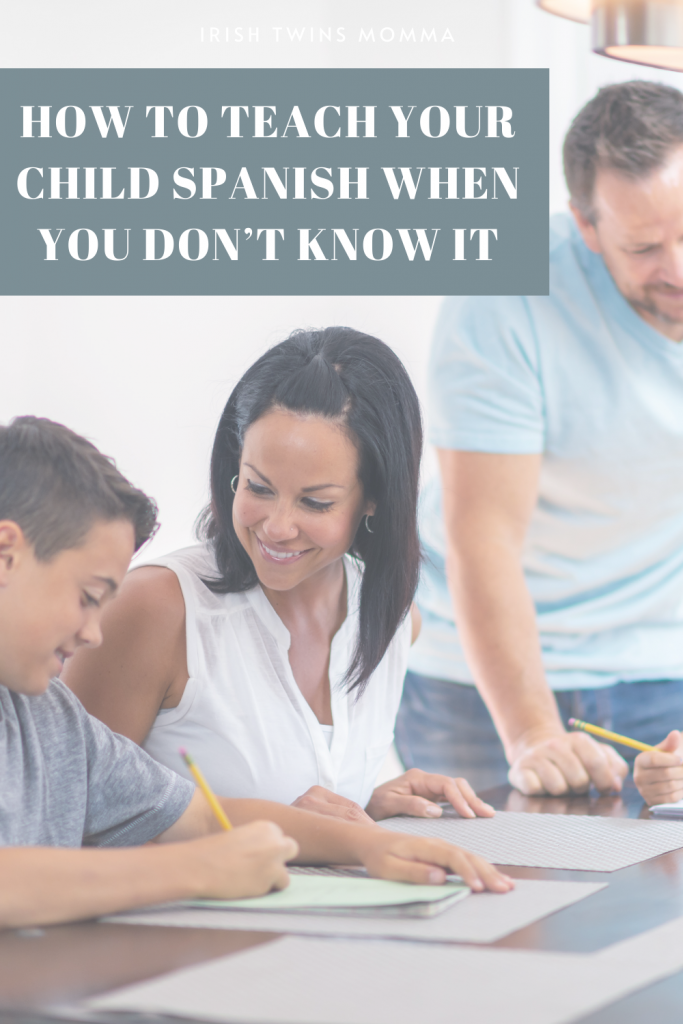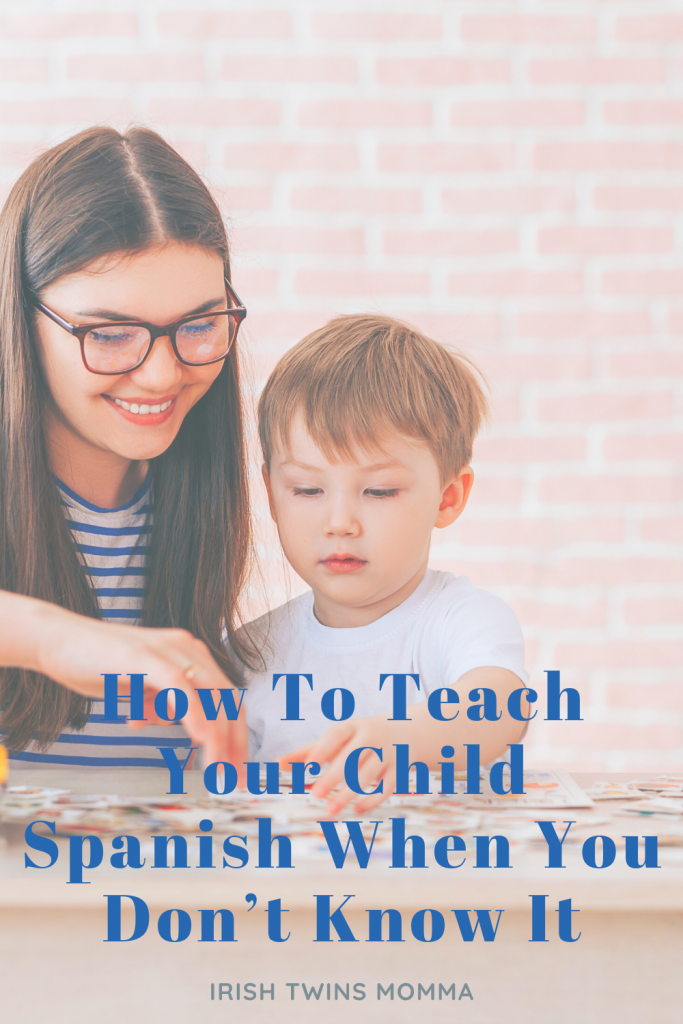This post contains affiliate links. If you click and buy, I may make a commission, at no cost to you. See my disclosure policy for more information.
Parents want their kids to grow up with the skills, confidence, and knowledge to adjust well into adulthood. Being bilingual is becoming more relevant in this new digital world. However, how do you teach your child Spanish when you don’t know it?

Stay Consistent
With any method that you decide, you must have them practice it every day. Set your child up with opportunities to learn in digestible amounts. Constantly exposing them to a language will help make it stick! Lucky for you, Spanish is one of the best secondary languages to learn.
Learn Together
How are you supposed to teach your child Spanish when you don’t know it? Simple, you learn along with them! When kids see their parents acting as role models, they take it more seriously. It is fun for you to learn a new language and practice with each other. With both of you learning Spanish together, there are many more opportunities to practice during the day. This will create a blossoming bilingual lifestyle rather than having lessons.

Make it a Game
Games are one of the best motivators to learn something. They are a way to get around the many obstacles to learning a new language. For learning Spanish, contests are fantastic for encouraging self-motivation.
For example, once they have over 300 vocab words memorized, they get to pick a local Mexican restaurant to practice ordering a meal in Spanish. After they are conversational years down the road, it’s probably time for your family to take a vacation, so why not visit Mexico?
Practice All Four Ways of Communicating
Lastly, it’s essential to keep in mind that there are four different ways of learning a language. These are:
- Listening: You can leverage their additional screen time as “language learning” time, where they only get to watch an entertaining Spanish show or video. Have them give you a summary of what they watched, share a new word they learned, or help them look up a word they didn’t know.
- Reading: Pick up some dual language books to read together at night in their bedtime routine. Having both languages on the page is excellent, so they don’t get too frustrated or bored not knowing what certain words mean.
- Writing: Once kids start to understand more words, they can begin writing them down and labeling items they know around the house. After this, they can try to put short sentences together. Eventually, they can create alternate “stories” to shows they have watched.
- Speaking: Talking with a new language is one of the most fun ways to put your skills to use. Have your child teach you sentences they are learning (which you can double-check online). Greet each other with a “Buenos Dias” in the morning. Set up playdates with other kids who speak Spanish at home.

Compared to other languages, Spanish is incredibly easy to learn, especially for kids. Even if you can’t speak it yet, learning Spanish will have many benefits for both of you!
Sincerely,


Leave a Reply